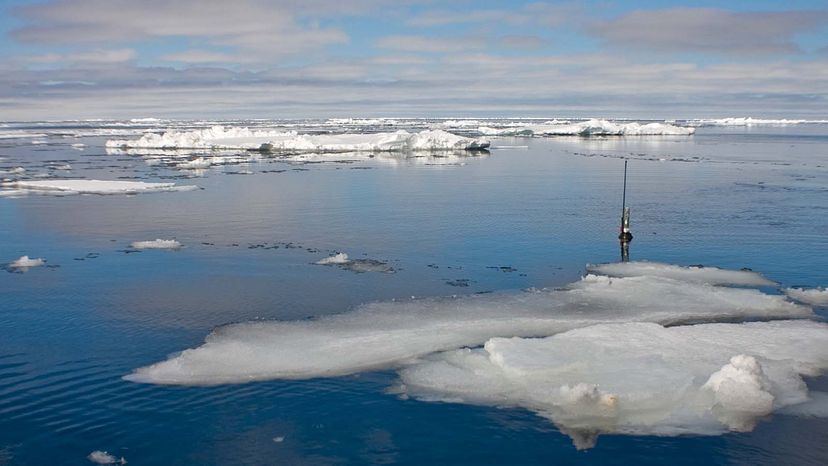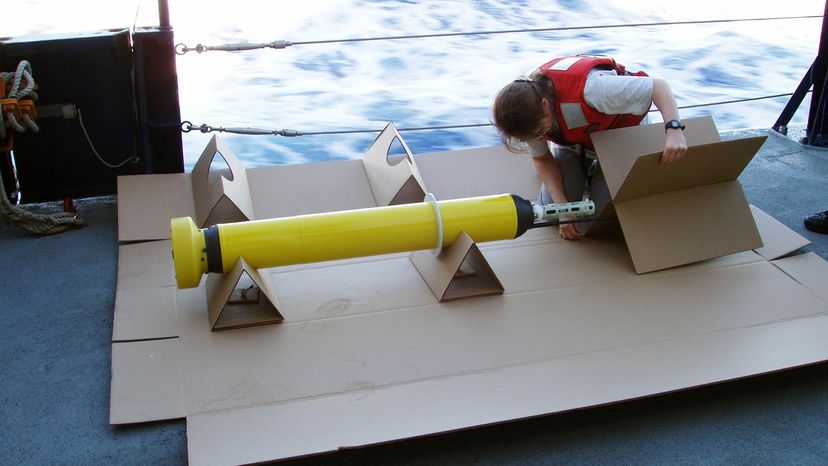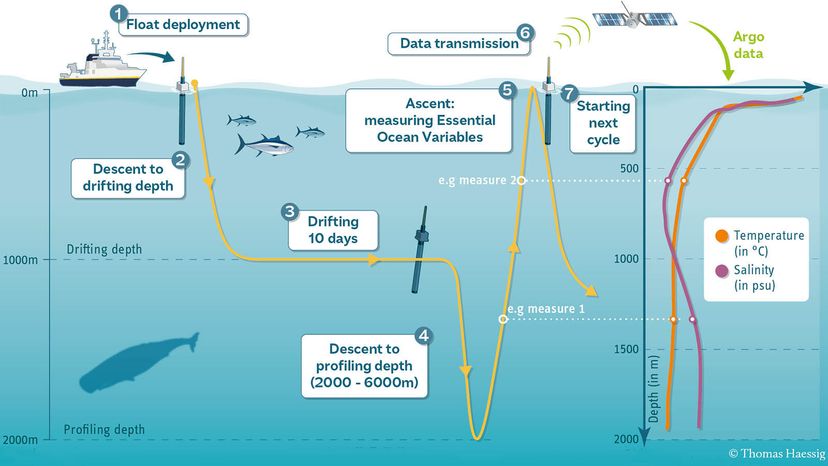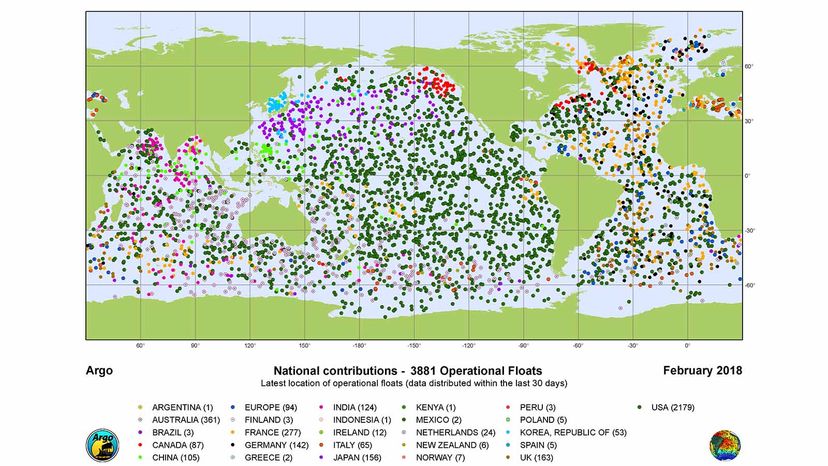
The ocean is massive. It covers more than 70 percent of Earth's surface. The Pacific Ocean alone blankets 60 million square miles (155 million square kilometers) of the planet. This water regulates our climate and weather patterns by funneling heat from the equator to the poles, produces more than half of the world's oxygen, and absorbs 50 times more carbon dioxide than our atmosphere.
The secrets the ocean holds can tell us a lot about the state of the planet. But, getting to that info can be a challenge for both humans and scientific instruments, especially in treacherous areas where there are rocky seas, raging storms, thick ice and deep pressure-crushing waters.
Advertisement
That's where a fleet of robotic, self-submerging floats come in. They're part of an international program called Argo, and these mini observatories provide researchers with comprehensive, near-real-time data about the physical state of the ocean. That data includes temperature and salinity patterns that help researchers more accurately measure global warming and rising sea levels, improve weather forecasts and climate predictions, and better gauge the intensity of hurricanes.




